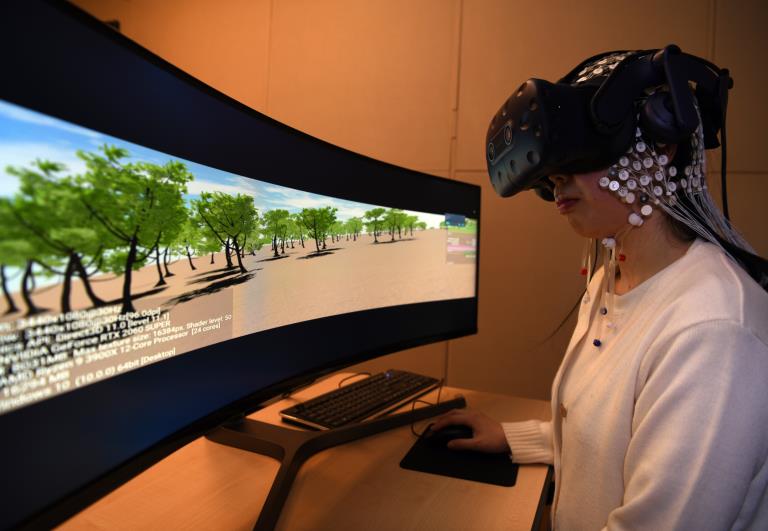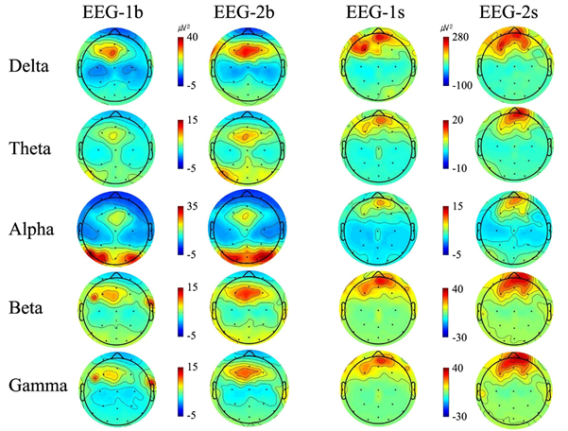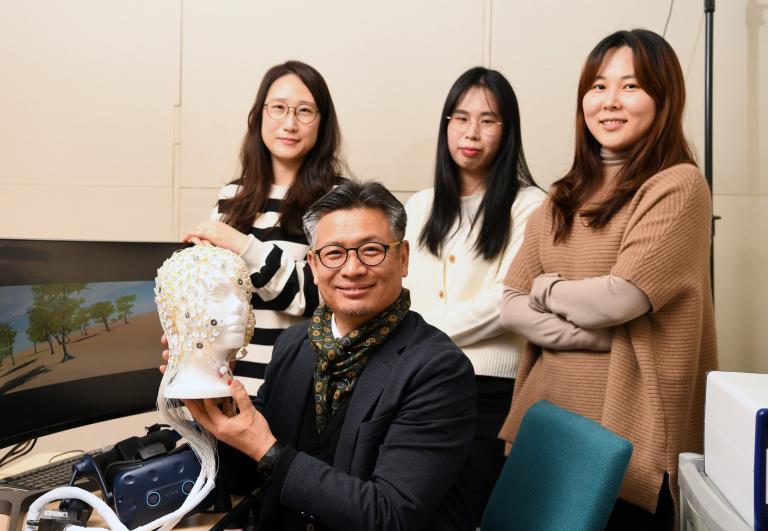Virtual Reality Experience without Cybersickness
- Writerkrissadmin
- Date2021-03-18 09:31
- Hits803
Virtual Reality Experience without Cybersickness
- Successful quantitative and objective measurement of cybersickness from VR experience -
- Real-time observation of brain wave changes (electroencephalography, EEG) expected to be used for the content evaluation -
The research team led by Principal Research Scientist Hyun-Kyoon Lim, Ph.D., Director of the Safety Measurement Institute of the Korea Research Institute of Standards and Science (KRISS, President Hyun-Min Park) successfully measured cybersickness from virtual reality (VR) experience quantitatively using brain waves(electroencephalography, EEG).
The key aspect of the research is quantitative analysis and identification of consistent changes in the specific part of the brain and specific brain waves during visual VR experiences. This outcome serves as an appropriate reference to objectively evaluate cybersickness, which had been primarily assessed based on questionnaires.

▲ Brain wave experiment using the standard cybersickness video developed by KRISS
VR is rapidly developing and increasingly being used in various fields including medicine, games, sports, and education, and it has a wide range of applications based on the indirect experience of a number of technologies in the areas of education, surgery, rehabilitation, training, etc. However, the downside of VR experiences is the increasing cybersickness caused by the intensifying immersion when users wear a head-mounted display (HMD).
Cybersickness is the dizziness and nausea experienced by those who watch rapid movements in digital devices. In addition, when users wearing an HMD rapidly turn their eyes, they could experience a delay as the video fails to keep pace with the device’s movement. It is called as a motion to photon latency (MTP Latency). Users also experience cybersickness when the difference between the visual information absorbed by the eyes and the body’s physical location accumulates and it might be another cause for the cybersickness.
To minimize cybersickness, it is necessary to take into account individuals’ level of sickness from the step of creating contents. If cybersickness can be measured quantitatively to grade its level, like ratings, PG 13 or 19+, in movie film, personalized VR contents may be provided. However, cybersickness had been primarily assessed based on questionnaires as there had been no method of objective and quantitative evaluation.
The most commonly used questionnaire for simulator sickness uses a four-point scale (0 to 3) regarding dizziness, nausea, disorientation, perspiration, vomitting, and vertigo. However, this is a highly subjective evaluation, highly likely to lack consistency in responses, and difficult to observe immediate changes.

▲ Cybersickness experiment results. Short-term reliability test between weeks showed high reliability for the brain waves from the rest (EEG 1b and EEG 2b) and from the cybersickness (EEG 1s and EEG 2s). Same patterns and locations of the brain were observed from the tests.
To solve these issues, the research team led by Dr. Lim came up with the method of quantitatively measuring cybersickness using brain waves. The team produced a standard cybersickness video and measured the brain wave changes of the participants.
? Brain wave changes coupled with a specific event can be observed in real time, both easily and swiftly. This brings merits of objective and quantitative measurement as accurate image data can be provided.
The research team applied the same stimulus to 21 subjects one week apart and observed whether their brain waves responded consistently. The results of the two experiments showed that the range of delta, theta and alpha frequencies in the specific part of the same person’s brain, such as the front and central parts of the brain were consistent. In particular, people who experienced serious cybersickness showed a greater range of brain wave changes.

▲ Research team led by Principal Research Scientist Hyun-Kyoon Lim of KRISS
(From left, Kyoung-Mi Jang (post-doc research scientist), Hyun-Kyoon Lim, Moon-Young Kwon (post-doc research scientist), Da-Mee Kim (Engineer))
“We are planning to use this research to create personalized contents by rating cybersickness to the contents to be created and developed,” explains Dr. Lim. “We will continue research for more experiment subjects.”
The research outcome was published in the February online edition of Neuroscience Letters, a renowned international journal.

